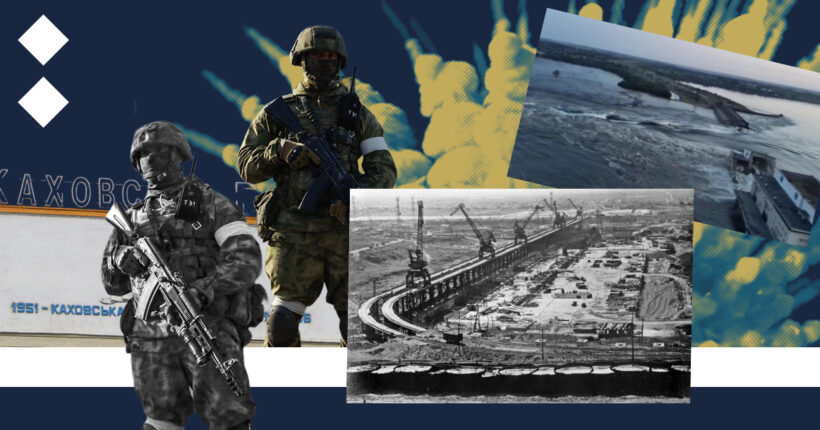
What is the problem?
News number one on June 6 is Russian troops' terrible, brutal destruction of the Kakhovka hydroelectric power plant. Ukrhydroenergo, Ukraine's main hydropower generating company, stated that as a result of the detonation of the engine room from the inside, the Kakhovka HPP was completely destroyed, and the station could not be restored. The dam of the Kakhovka hydroelectric power station, one of Ukraine's ten largest hydroelectric power plants, went underwater in hours. As of noon, several settlements in the Kherson region were significantly flooded, Nova Kakhovka, and some districts of Kherson were flooded. On the Dnipro islands, water reached the roofs of houses. Approximately 80 settlements in the region are at risk of flooding.
What is the solution?
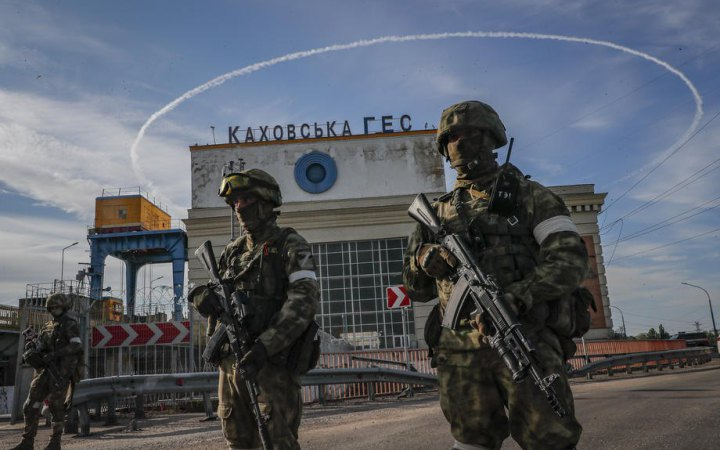 Ukraine has opened criminal proceedings on the fact of blowing up the Kakhovka HPP dam. The investigation was initiated under two articles of the Criminal Code:
Ukraine has opened criminal proceedings on the fact of blowing up the Kakhovka HPP dam. The investigation was initiated under two articles of the Criminal Code:
- Art. 438 (violation of the laws and customs of war)
- Art. 441 (ecocide).
The head of Ukraine's Security Service, Vasyl Malyuk, emphasized that Ukraine's task is to bring to justice not only the authorities of the Putin regime but also ordinary perpetrators of crimes. "By blowing up the Kakhovka HPP dam, the Russian Federation finally proved it is a threat to the entire civilized world. After all, only a real terrorist state can arrange a man-made and ecological catastrophe of this level. It will definitely answer for it — both on the battlefield and in international courts," said the head of the SSU.
Unfortunately, no court will return to Ukraine a unique hydro-technical structure completely destroyed by the Russians. Rubryka decided to reflect on Kakhovka NPP's history.
How it all began?
15 facts about Kakhovka HPP
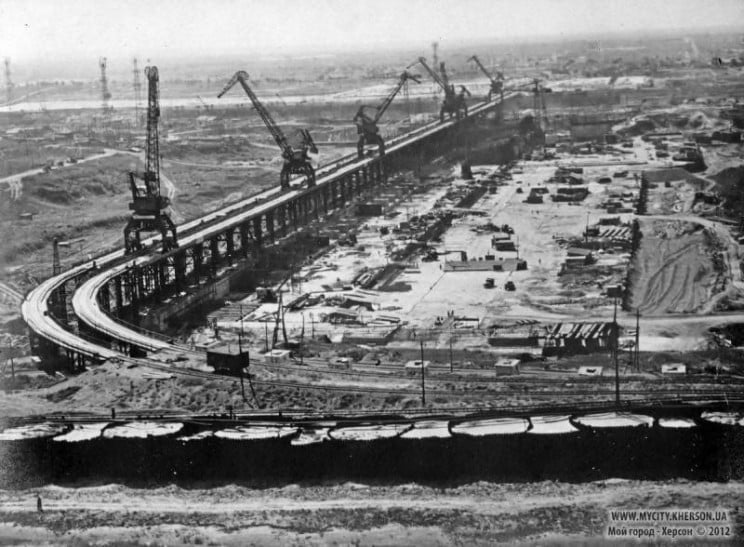
Construction of the Kakhovka HPP, 1955
1. The construction of the hydroelectric power station began in September 1950 — that's when the resolution of the Council of Ministers of the USSR "On the construction of the Kakhovka hydroelectric power station on the Dnipro, the South Ukrainian and North Crimean canals and the irrigation of the lands of the southern regions of Ukraine and the northern regions of Crimea" was published. The Kakhovka HPP was the last project construction, called the Great Construction Projects of Communism. It included the construction of several hydroelectric power stations, giant irrigation systems, and shipping channels.
2. The Soviet authorities set themselves the goal of conquering nature — to turn the arid steppes of southern Ukraine into fertile lands and, simultaneously, defeat America, which Moscow already hated. In 1942, the world's most powerful hydroelectric power station, Grand Coulee, in the Rocky Mountains, was put into operation in the USA. Kakhovka HPP surpassed American indicators. Moreover, unlike the Grand Coulee, it was located on a flat river.
3. The construction of the Kakhovka HPP took five years. The scale was impressive: 1,100 vehicles, 30 excavators, 75 crawler and portal cranes, 100 bulldozers, seven dredgers, and 14 steam locomotives were involved in the project. Almost 800 million cubic meters of soil were removed with all this equipment.
4. Anyone who wanted to could participate in the construction — hundreds of thousands of posters about the new construction were hung everywhere: in collective farms and factories, schools, factory educational institutions, and simply on the streets. Despite the optimistic slogans in the mass media and campaign leaflets of the time, the Soviet authorities did not provide conditions for normal living for the builders. After the opening of some KGB archives, Ukrainian historians were shocked — Kakhovka HPP was built in dirt and poverty. "There is no water," "there is no bread," "there is no sewage system," "there is no housing," "there is no money" — these were the letters written by construction workers to various settlements of the country in the early 1950s. Not all of them reached the addressees — authorities constantly scanned the correspondence.
5. Despite this, there was no shortage of people willing to join the next communist mega-construction. People believed the propaganda about the wonderful future of the "best country in the world" — as USSR tried to disguise itself — and endured inconveniences. In total, 12 thousand people of 19 nationalities performed the work. More than 300 employees of Dniprobud were awarded high government awards for high production indicators and a significant contribution to the development and implementation of progressive work methods during the construction of the Kakhovka HPP.
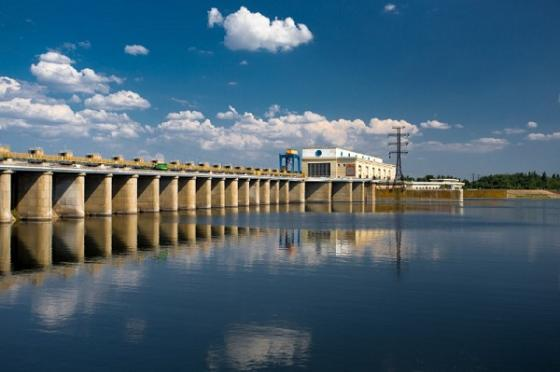
Kakhovka HPP, 2020. Photo: Ukrhydroenergo
6. On March 30, 1952, the first cubic meter of concrete was laid in the HPP building. Four years later, the last sixth hydraulic unit was put into operation. The dam of the Kakhovka HPP blocked the Dnipro River, thanks to which the Kakhovka Reservoir was formed, an artificial body of water more than 200 kilometers long with a maximum width of more than 20 kilometers.
7. The creation of the Kakhovka Reservoir led to flooding of the lands. 2.8 thousand hectares of arable land, 36 thousand hectares of meadows and hayfields, and the historical area Velykiy Luh, known as the location of several Zaporizhzhia Siches, where Cossacks used to reside. Together with this — almost a hundred villages where 37 thousand people lived. The authorities were not interested in the opinion of the residents of the flooded settlements — they were simply obliged to relocate.
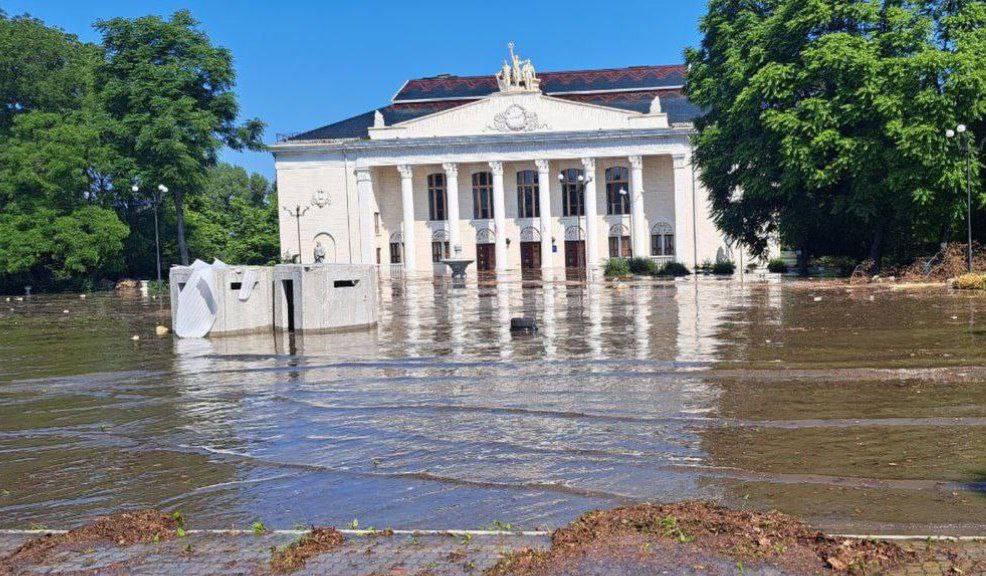
After the Russian army blew up the Kakhovka HPP, Nova Kakhovka was flooded.
8. In parallel with the hydroelectric power station, a new town was built on the banks of the Dnipro, five kilometers from the station named Nova Kakhovka. It was planned as a small town of energy workers with a population of up to 20 thousand people. The new settlement, with a residential area of about 100,000 square meters (over 600 houses), with a full range of cultural and household facilities, was built in less than four years, even before the Kakhovka HPP was constructed. The motto of the city's builders became the words: "Build not temporary housing, but permanent!". In the early 50s, many leading architects and artists came there to create sketches and paintings, bas-reliefs, and ornaments with their own hands. On June 6, 2023, the city was flooded by water from the Kakhovka Reservoir due to the criminal actions of the Russians.
9. During the construction of the Kakhovka hydraulic unit, a number of innovative technical solutions were applied. For example, the Kakhovka HPP was built on fine-grained silt soil. For the first time in world hydraulic construction practice, a unique hydraulic structure was built: an earthen dam was made with very gentle slopes as if spreading it on a large quicksand area.
Innovative solutions at the Kakhovka HPP were also found in independent Ukraine. In 2019, it was there for the first time in the country that an experiment was conducted on water aeration — air enrichment.
10. The Kakhovka HPP gave impetus to the development of the economy in the entire region and provided electricity and drinking water to the whole of the southeast of Ukraine. The formed dam connected the left and right banks of the Dnipro River and became a pathway for cars and railway transport. The construction of the Kakhovka hydraulic system ensured the passage of heavy cargo vessels from the mouth of the Dnipro to the city of Zaporizhzhia, creating conditions for irrigation, watering, and water supply of the southern regions of Ukraine and Crimea, in particular, the North Crimean Channel. This fertility route will have to be forgotten after Russia's destruction of the Kakhovka HPP.
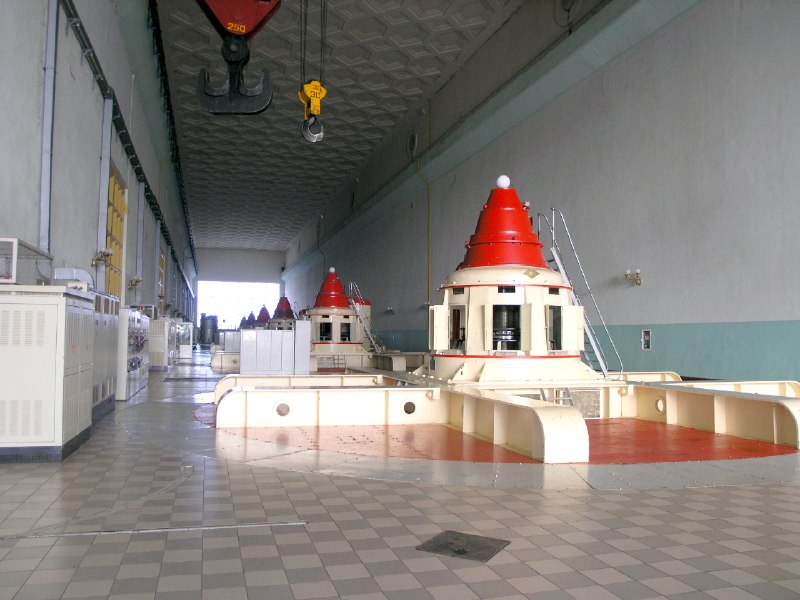
The Russian invaders blew up the engine room of the Kakhovka HPP
11. In 2006, during the time of independent Ukraine, the Kakhovka HPP was modernized. New buildings were erected there, and the road surface was reconstructed. For modernization, they purchased equipment from leading European companies — suppliers of products for power engineering and electrical engineering. The World Bank and the governments of Switzerland and Canada financed the project.
12. Kakhovka HPP is the only power plant in Ukraine named after an outstanding person. In 2000, by a resolution of the Cabinet of Ministers of Ukraine, the Kakhovka HPP was named after the scientist Petro Neporozhniy, who headed the chief engineer's service during the station's construction. Since July 2013, the building of the Kakhovka HPP has been classified as a monument of science and technology, architecture, and urban planning of local significance.
13. Before the full-scale aggression of Russia against Ukraine, more than 250 employees worked at the Kakhovka HPP.
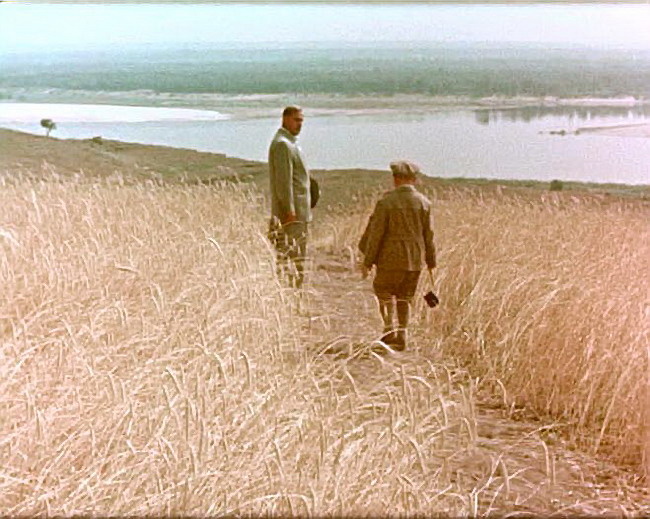
A frame from the film "Poem about the Sea"
14. The movie "Poem about the Sea" was filmed about the construction of the Kakhovka HPP — a 1958 feature film based on the script of Oleksandr Dovzhenko, a famous Ukrainian director. The picture tells about the drama that the construction of the Kakhovka HPP turned into for the village residents near the station. The movie won a number of awards at Soviet and international film festivals.
15. At the end of February 2022, Russia occupied Nova Kakhovka and, along with it, the hydroelectric power station. Most of the HPP workers did not want to work for the occupiers. In the end, the occupiers replaced all personnel with Russian citizens, and the station itself became a military facility.
The Russian military filled it with explosives and weapons and created a stronghold there because they knew the station could withstand powerful blows and felt safe there.
In April 2022, the Russian occupiers mined the dam and units of the Kakhovka HPP. At the end of October, they started blackmailing Ukraine and the world by blowing up the Kakhovka HPP. Finally, on June 6, 2023, the Russians carried out their threats.
Newsletter
Digest of the most interesting news: just about the main thing






